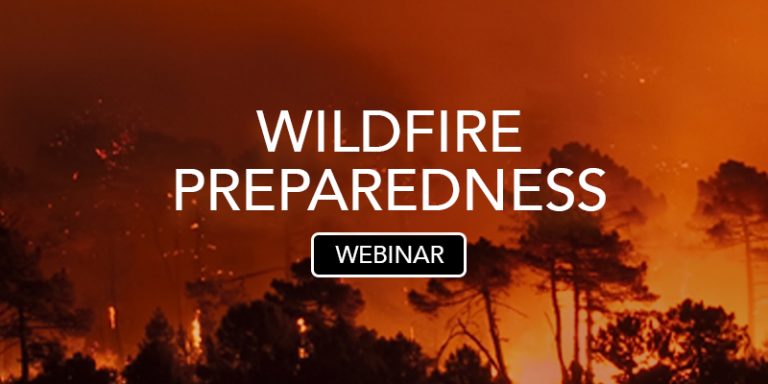Dr. Jon Keeley: US Geological Survey, Adjunct Professor at UCLA
Dr. Keeley is a fire ecologist investigating historical fire patterns and their relationship to climate and urban development. He is currently a research scientist with the U.S. Geological Survey and is an adjunct professor at UCLA. Other research focuses on the impact of perturbations in fire regimes on invasive plants in Mediterranean climate ecosystems.
Battalion Chief Drew Smith, LA County Fire Dept.
Chief Drew Smith has been with the Los Angeles County Fire Department since 1988. He’s fought Santa Ana-driven fires for over 30 years now and leads the northwest LA County Battalion including Calabasas, Malibu, and the surrounding hillside communities.
Tim Gaspar, CEO, Gaspar Insurance
Tim Gaspar founded Gaspar Insurance in 2008 and is an expert on reducing risk for his clients. He’s been advising homeowners in southern California on ways to protect their homes from wildfires and other perils.
View the recorded webinar below and read about the key takeaways.
Key takeaways
- Dry springs and dry summers increase fire activity, but we cannot predict fire activity on climate alone. If it’s hot enough and dry enough, a fire can spread
- Human activity is the main cause of fire ignition (accidental primarily) and the Santa Ana winds drive the big event fires in Southern California
- The most important thing for a homeowner to consider is where you plant vegetation in relation to your house.
- Don’t plant anything within 5 feet of your house
- For 100 ft around your home, have some clearance
- Have widely spaced vegetation
- Dead branches are trimmed 6 ft from the ground
- Don’t have wooden structures like fences touching your house
- Clear off dead leaves and branches from your roof – they catch embers and ignite
- Dry leaf litter, wicker furniture, and live fuels are hosts for embers to ignite
- Most of the time, it is the ember cast that catches things around your home that causes structure fire loss
- Most big fires in southern California start along roads in grass – the grass carries the fire into the thick vegetation
- Population density impacts fire frequency
- Southern California fire season starts May-June and lasts through December
- The topography is another driving factor for fires in Southern California
- Fire information and education: Lessons Learned Center
- LACFD Ready, Set, Go! preparedness packet
- Fires in more forested areas have added challenges due to access and topography
- You should have hardscape (rocks, concrete) for 5 feet around your house
- You can make modifications to your home
- The vents to your attic (eaves) carry embers in – so close your eaves!
- Double-pane windows help impact home survival
- Change the screen size to the vent (eave) to your attic, the smaller the screen size, the lower the chance for embers to enter your attic
- Evacuations are done with local law enforcement
- Everything comes down to time
- Notifications for evacuations can come from door knocks, helicopters, patrol cars, via public information office and their websites, broadcast on the news, radio
- Ensure you are listening to a credible and reliable source
- Insurance-related items
- Ahead of time, know what you have through documentation – use your phone to take a video of your home and all the things you own. You can turn it over to the insurance company.
- As long as you have homeowners insurance that covers your personal property (most policies do) only worry about things that are not replaceable (you, your family, your pets, medication, family heirlooms) otherwise your insurance will cover your belongings.
- FYI – homes are very expensive to rebuild and take a very long time (nothing under $300/sqft) so ensure your home insurance limit is at least $300/sqft or more if you have nicer construction.
- Loss of Use Coverage – pays for you to stay in a hotel or rent a home if your home is being rebuilt. Rebuilding a total loss home can take at least two years
Q&A from attendees
- What about access to water to homes in hills, does the FD use pools as a water source?
- The Fire Department can use private water supply like pools and wells and there are standards for this
- If the homeowner leaves a pull pump, the FD may use it
- Is there information about fire-wise communities?
- It’s kind of like the neighborhood watch
- Information sharing network with building standards
- Is there any situation where it makes sense to fight the fire yourself?
- No! The fire environment can change and you put your life at risk
- Is there a central location to be notified about evacuations?
- The organization running the fire is responsible for the fire and communicating the directions such as evacuation warnings and orders broadcast by local authorities
- Does the FD check on property clearance?
- Yes, the FD does on-site inspections, no drones, and look for the compliance of brush clearance standards
- How does the FD work with Private Fighters from insurance companies?
- They work together and communicate frequently, and check-in with the FD
For questions about this event, please email Julianna the event coordinator at
info@gasparinsurance.com.




